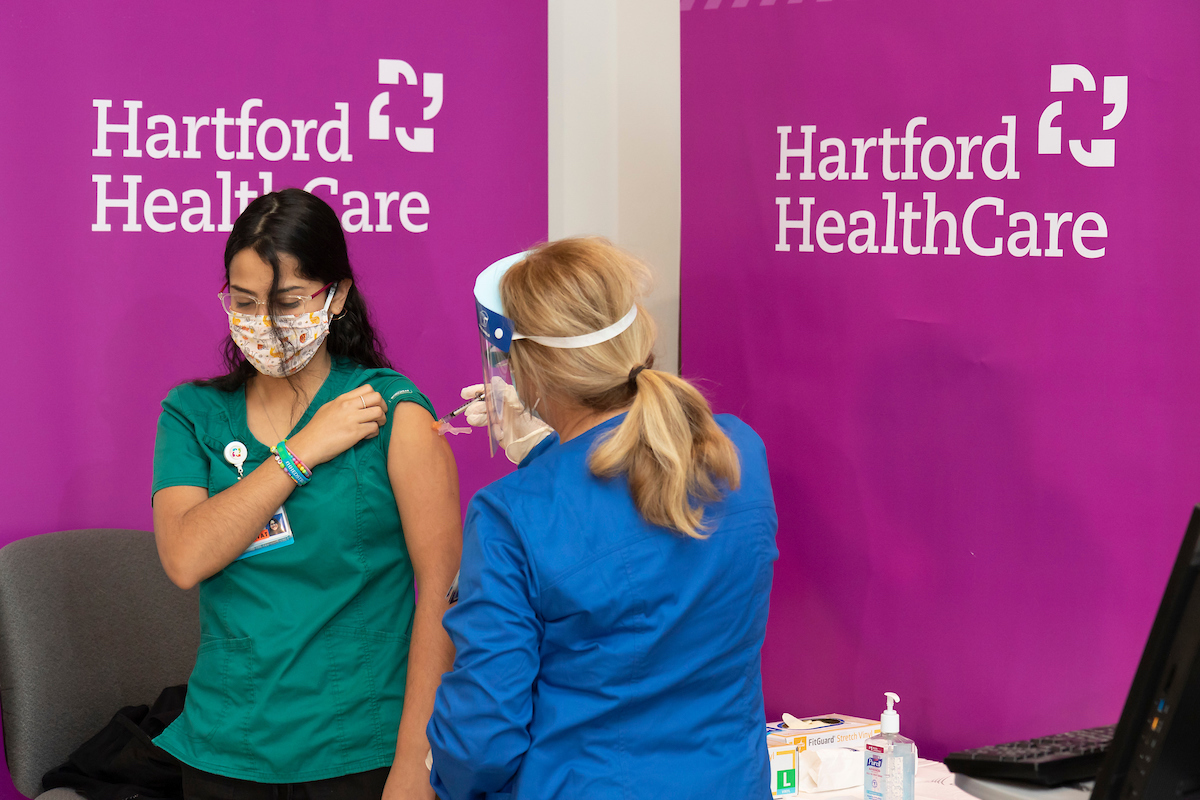<< Back
State’s COVID-19 Vaccine Rollout, With 65 Percent of Doses Administered, Among Nation’s Best

January 04, 2021
As front-line Hartford HealthCare staff lined up Jan. 4 in front of the media, including CNN, to receive the second dose of the COVID-19 vaccine, Connecticut was attracting national attention as one of only four states that have administered at least half of their COVID-19 doses.
Dr. Ajay Kumar, Hartford HealthCare‘s Chief Clinical Officer, referred to statistics culled by Bloomberg in its vaccine tracker, noting that Connecticut health officials are administering 65 percent of its allocation, compared to just 33 percent, or 4.33 million people, nationwide. In 12 states, fewer than a quarter of the doses received have been administered.
A second dose of the two approved vaccines is required, according to experts, to achieve its 95 percent effectiveness rate against the potentially lethal virus.
“(The vaccine) will hopefully completely flatten the curve,” said Keith Grant, APRN, Senior Director of Infection Prevention with Hartford HealthCare just before rolling up his sleeve for a second dose. (In the photo above, Hartford HealthCare patient care assistant Jasmine Ortiz receives her second dose of the Pfizer-BioNTech vaccine at the Connecticut Convention Center.)
Grant, who reported experiencing no side effects from the first dose last month, said the safety of the vaccine is evidenced by the low number of problems experienced by the millions of Americans who have received it to date.
“It is very, very clear to see the trials showing a safety profile that it’s true,” he said.
Across the Atlantic, British health officials might push the time between the vaccine’s first and second doses from the recommended three to four weeks to three months or more. This would allow the country to vaccinate as many people as possible. They might also allow people to mix the vaccines instead of requiring people to get both doses from the same manufacturer.
What is being considered here, however, is the possibility of halving the dosage of each vaccine, from 100 micrograms to 50. The lower dose showed an equally powerful immune response as the higher in people age 18 to 55 during clinical trials for the Moderna vaccine, according to Dr. Moncef Slaoui of Operation Warp Speed.
Representatives of the virus response initiative are discussing the possibility with the Food and Drug Administration, which would have to approve it, Dr. Slaoui noted. The two doses would still be given four weeks apart.
The focus on maximizing the impact of vaccine comes as COVID-19 infections surge worldwide and two new strains of the virus have been identified and determined to be more infectious than the original.